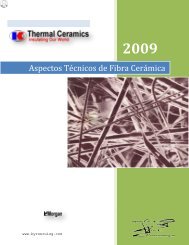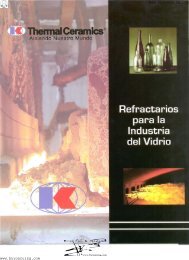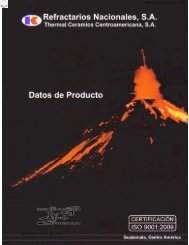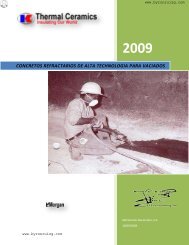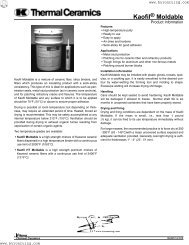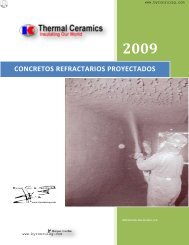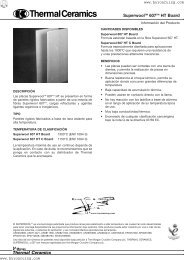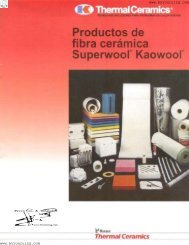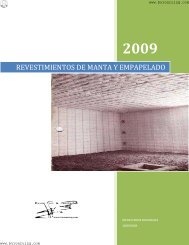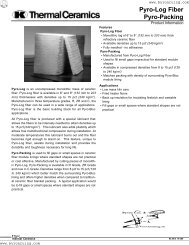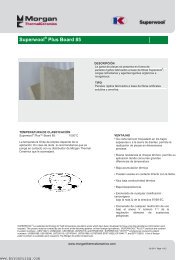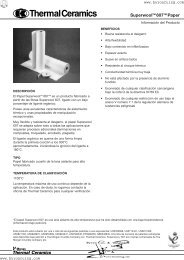Untitled
Untitled
Untitled
Create successful ePaper yourself
Turn your PDF publications into a flip-book with our unique Google optimized e-Paper software.
www.byronruizg.com<br />
www.byronruizg.com<br />
How lower thermal conductivity relates to energy saving<br />
All businesses around the world are increasingly aware of the urgent need to make better<br />
use of the world’s energy resources.<br />
Improved energy efficiency is often the most economic and readily available means of<br />
reducing greenhouse gas emissions.<br />
The demand for energy worldwide continues to increase year by year and the 2009 World<br />
energy outlook predicted the numbers would continue to rise.<br />
Lower thermal conductivity ultimately leads to reduced energy losses. Morgan Thermal<br />
Ceramics tested different types of blanket, all at 128kg/m 3 (8lbs/ft 3 ). The results set out in<br />
the chart below show the percentage improvement in energy saved by Superwool ® Plus<br />
and the percentage relative to the measured thermal conductivity of the fibres.<br />
At 1000°C (1832°F) our results show a competitor AES blanket has approximately 31%<br />
higher thermal conductivity compared to Superwool ® Plus fibre. This means Superwool ®<br />
Plus fibre provides a 31% saving in energy transmitted compared to the competitor AES<br />
blanket and up to 16% compared to standard Superwool ® 607 ® blanket.<br />
Back to Basics<br />
Relative Thermal Conductivities and % Improvement for Superwool ® Plus<br />
W/mk<br />
0.35<br />
0.30<br />
0.25<br />
0.20<br />
0.15<br />
0.10<br />
0.05<br />
Superwool ®<br />
Plus fibre<br />
Superwool ®<br />
607 ® fibre<br />
Ceramic<br />
fibre<br />
AES<br />
Competition fibre<br />
0 %<br />
20 % 10 % 12 % 25% 15 % 25 % 21 % 22 % 16 % 11 % 25 % 16 % 8 % 31 %<br />
0.00<br />
200 400 600 800 1000<br />
Temperature (°C)<br />
21



